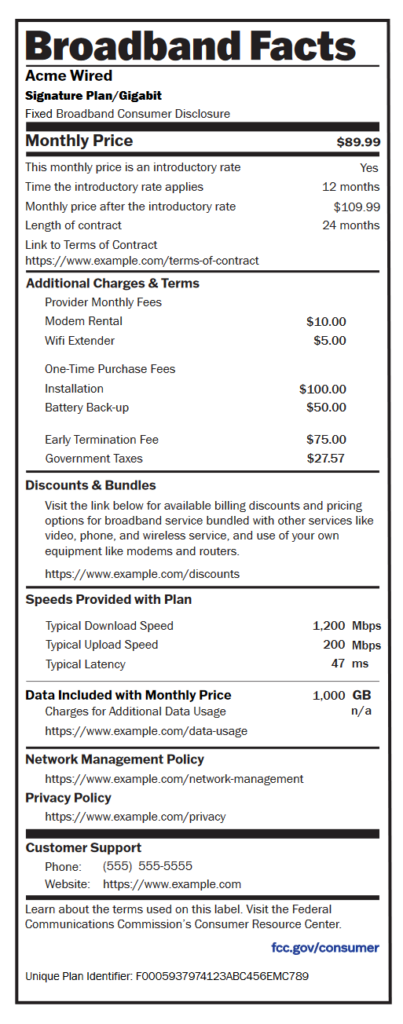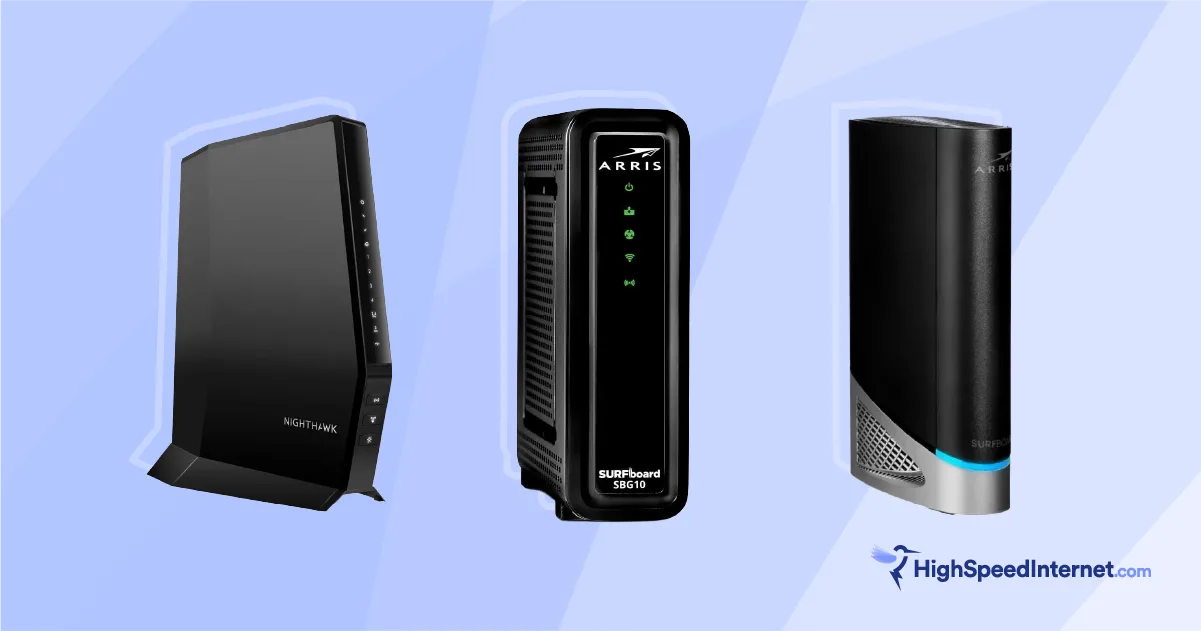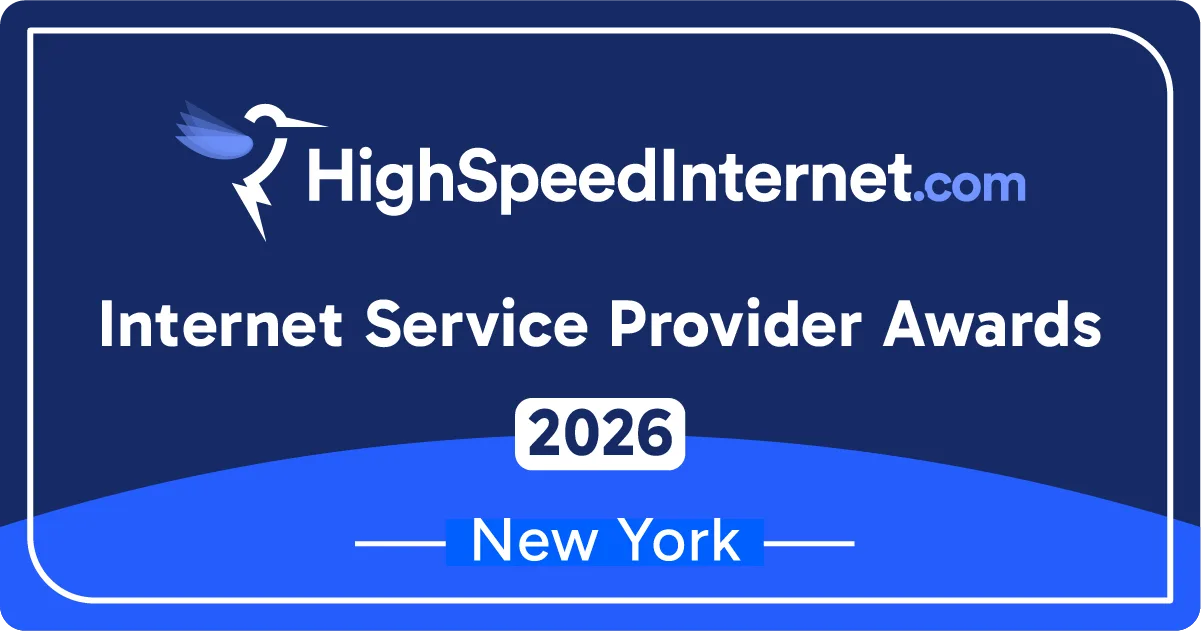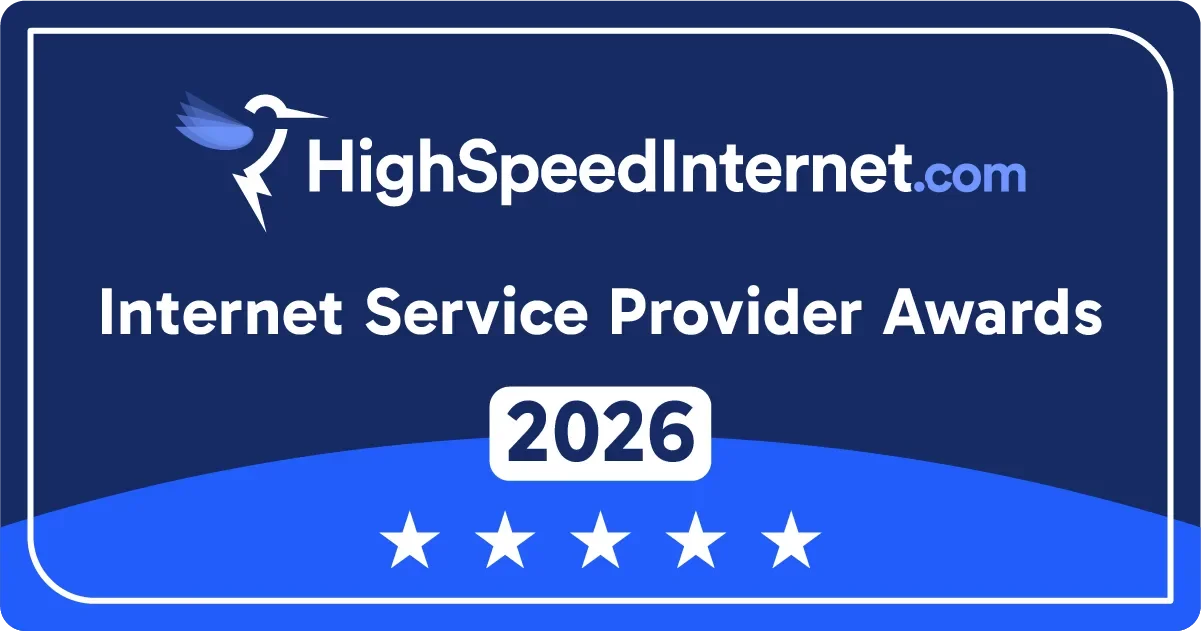What Do Broadband Nutrition Labels Mean for Internet Users?
Understand the information broadband labels provide and the information they don’t.
Apr 2, 2024 | Share
Featured
Starting on April 10, 2024, internet service providers (ISPs) will be required to provide details about the costs and performance of the plans that they offer, modeled after the FDA nutrition labels that must be displayed on food packaging in the U.S. These broadband labels will help consumers avoid hidden fees, price hikes, and many of the other unpleasant surprises that they would find on their internet bill so that they can choose a plan that meets their needs.
We’re going to walk you through the basics of this new labeling system—how it works, what it means, and what important information you’ll need to find elsewhere.
What are broadband nutrition labels?
In November 2021, Congress passed the Infrastructure Investment and Jobs Act, which was designed to improve transportation, energy, and communications systems across the U.S. As part of its goal to improve broadband infrastructure, it directed the FCC to create clear labels for internet plans and require providers to display them at the point of sale.
These broadband nutrition labels provide internet customers with access to comprehensive and accurate information about their internet plans—something that’s rarely included in advertisements. Labels must be prominently displayed next to the plans (not in the fine print or linked on a different page) and available in customers’ online portals so that they can easily look up the information for their current plan. The labels must also be machine readable so that third parties (like us!) can easily aggregate this information to create better comparison shopping tools.
If you’d like to try out HighSpeedInternet’s tools to help you compare internet providers, enter your zip code below to see the providers in your area and how each one compares to the competition.
What does the information mean?
There’s a lot of information packed into the new broadband labels, but it’s generally straightforward. Here’s what each fact actually means about an internet plan.
Fixed or mobile

Before we even get to the actual numbers, we’ve already got some important information. Besides the provider and the name of the plan in question, the top of the label notes whether the plan is fixed or mobile.
While you’re not likely to mix up a phone plan with a fiber plan, it’s not always quite that obvious. For example, a 5G hotspot and a 5G home router both use the same technology, connect to the same network, and look fairly similar. But while you can take the hotspot with you, the router won’t work once you leave your home address. To further complicate things, some providers, like Starlink, use the same equipment for mobile and fixed plans and might allow you to switch from one to the other.
So while it might not be an issue most of the time, it’s important when looking at a wireless internet plan to double check whether it’s fixed or mobile.
Monthly price
This is the basic recurring price that you’ll pay for your internet connection. Importantly, providers must note if this is an introductory rate that will go up after a promotional period, how long the promotional price lasts, and the price you’ll pay after the promotional period.
This section also indicates whether or not the plan requires a long-term contract and, if so, how long that contract lasts. This is especially important if the plan has an introductory rate because you can see how long you’ll be locked in at the higher price before you can switch providers.
Provider monthly fees
These are fees that will be added to your bill every month in addition to the monthly price of your plan. Many of these fees are for optional add-on services or those, like equipment fees, that you might be able to avoid by purchasing the equipment or using your own. Other fees might be required by the provider, such as pass-through fees, or when providers pass government service or regulatory fees on to consumers in the form of additional fees on their bills.
Any monthly fees that customers will or might be charged on a monthly basis must be itemized in this section, though providers that charge no fees and simply include all costs in a single flat-rate for the plan are not required to itemize everything that goes into that price.
One-time fees
These are fees that don’t recur on the customer’s bill and are charged only once, usually when you first sign up for the plan. Upfront costs like installation or activation fees can make it impractical to switch plans, even if the monthly fee is within your budget, so this is an important factor to consider before switching.
Early termination fee
Early termination fees get their own line on the nutrition label because they can be absolutely ridiculous. Customers incur an early termination fee if they cancel their service before the end of their long-term contracts, which usually last 12 or 24 months.
While these fees are very common and might seem easy to avoid, most people don’t break contracts because they didn’t plan ahead. A year is a long time, especially if you lose your job, find a new career opportunity, or have some other major life change. The last thing you want to worry about in these situations is potentially getting fined hundreds of dollars by your internet provider.
Early termination fees were previously hidden deep in the fine print, so it’s great that they’re highlighted so prominently by the FCC. At HighSpeedInternet, we’re not fans of strict contracts and sneaky fees, so we hope this puts pressure on providers to follow those that have ditched long-term contracts altogether.
Government taxes
Taxes on internet connections vary by jurisdiction, and many ISPs simply include them in the price of their plans. In other cases, taxes are just another item tacked onto customers’ monthly bills that might come as a surprise. This section on the label makes it clear to customers up front how the provider will handle taxes so it’s not a surprise on their first month’s bill.
Discounts
If there’s one item on this list that providers usually don’t have a problem communicating to potential customers, it’s discounts. Unlike the other sections, providers are not required to list discounts, but they may include a link to them here. It’s nice to have this as a part of the label so you can find all the relevant discounts in one place and you don’t miss out on a benefit just because you didn’t know it existed.
Bundles
Many providers will offer a discount on your bill if you also sign up for other services like phone or paid TV. While this can be a helpful offer for those looking to sign up for multiple services anyway, some providers use bundles to mislead customers about the cost of standalone services by showing the discounted bundle price of internet, even though customers can get that discount only if they sign up for one or two additional full-price services.
The broadband labels require providers to display labels for their standalone broadband services but allow bundles to be listed as helpful options to those who are interested in multiple services, which is exactly how it should work.
Typical download speed
This is the download speed that customers can expect to get from their provider, though it may not necessarily match up with the advertised speed of the plan. This is an excellent move by the FCC to call out provider shenanigans, but it does still seem to be a self-reported number, so it’s still wise to consider these speeds with a grain of salt.
Typical upload speed
Upload speeds have long been overlooked in the advertising of internet plans, but they’re very important to content creators, students, remote workers, and many other categories of internet users. As with download speeds, these seem to be self-reported, but having them prominently displayed makes it much easier for those who care about upload speed to find a plan that works for their needs.
Typical latency
Latency is another aspect of internet speed that is often overlooked. It measures the time it takes for data from your computer to reach a remote server and return. Latency is incredibly important in anything that happens in real time, especially playing online games. Video chat, telehealth, and livestreaming also depend on keeping latency as low as possible.
Data included with monthly price
More commonly known as a data cap, this is the amount of data that you can use in a given month before you must pay extra or deal with decreased performance of your connection. Data caps are another way providers have traditionally nickel-and-dimed their customers, but many providers have begun to ditch these data caps altogether, and we think that’s great.
Although plans with unlimited data are the standard we think everyone should be aspiring to, this is another area where some providers have intentionally misled customers by stretching the meaning of unlimited data. Fortunately, the FCC is very clear. Data only counts here if it’s included in the monthly price and doesn’t have reduced performance. This makes it much harder for providers to make misleading claims about their plans.
Network management
Related to data caps, network management deals with how data moves across their networks. This includes information about blocking certain content on the network, throttling speeds, and paid prioritization by either customers or content providers. These issues are related to providers charging customers for premium data plans as well as to net neutrality and providers making deals with content providers without the knowledge of their customers.
Unfortunately, this information isn’t required to be included on the label itself, though a link to this policy must be on the label.
Privacy policy
Providers must include a link to their privacy policy, which must comply with FCC privacy regulations.
Customer support
Finally, the label must include a phone number and website address to contact customer support in case you run into any problems
What information is not in the labels?
Although these labels contain a lot of information, there are still some important things to know when looking for an internet plan that aren’t included on the label. Perhaps most notably, the labels originally included information about whether or not the provider participated in the Affordable Connectivity Program (ACP), though this requirement was removed when Congress failed to fund the program.
There are government programs other than the ACP that still help people get an affordable internet connection, but these are also not listed on the new labels.
Are you looking for information on the providers that have coverage in your area? Enter your zip code below to see what options you have available.
Finally, one of the most important things to watch will be to see if providers try to sneak around these guidelines by finding loopholes or blurring the lines around certain terms. As mentioned above, many providers have had loose definitions around unlimited data and data caps. Although the FCC is very clear that monthly data can only include data that isn’t subject to extra fees or reduced performance, providers have long danced around the concept of reduced performance by conflating throttling, deprioritization, and general network management techniques.
These details are required to be laid out in a linked network policy explanation, but people have to follow the link to see it, and it’s not guaranteed to be as clear as the information in the label. Hopefully providers will think twice before trying to pull a fast one on the FCC, but we won’t know until someone tries it.
The bottom line: Labels are a move in the right direction
Although they may not be the magic solution for every instance of internet providers misleading consumers, Broadband Labels are a huge win for consumer protection. They demystify a lot of the technical details around internet plans, and they go a long way toward ensuring that providers use consistent language in marketing. Most importantly, the labels expose any hidden fees and other unpleasant surprises that have often been hidden in the terms of service.
Hopefully these labels will continue to evolve and improve on a regular basis, such as by including the ACP or a successor program once it’s available. This won’t be the last time we see an internet provider trying to pull a fast one on its customers, but clear labels will make it much harder for ISPs to get sneaky and easier for us to call them out on their shenanigans.
Author - Peter Christiansen
Peter Christiansen writes about telecom policy, communications infrastructure, satellite internet, and rural connectivity for HighSpeedInternet.com. Peter holds a PhD in communication from the University of Utah and has been working in tech for over 15 years as a computer programmer, game developer, filmmaker, and writer. His writing has been praised by outlets like Wired, Digital Humanities Now, and the New Statesman.




